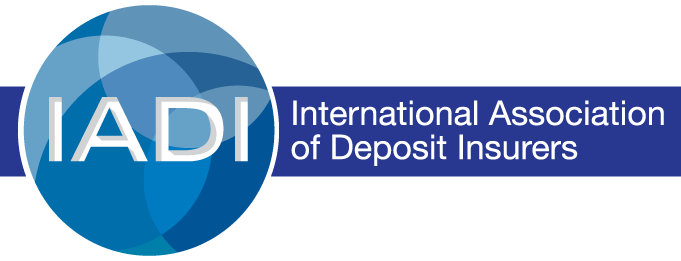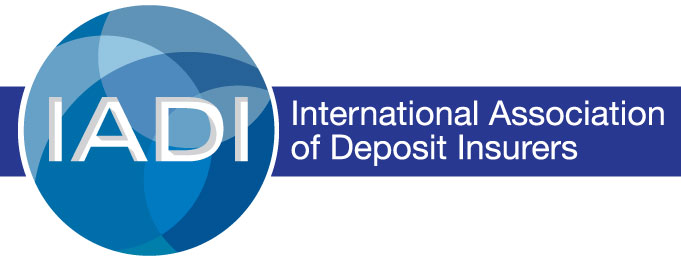Building strong foundations: The architecture of financial safety nets and deposit insurance systems
4 July Tbilisi, Georgia
Eva Hüpkes
IADI Secretary General
Good morning, let me begin by thanking Levan Todua for bringing us all together in this beautiful country. Over the past few days, I have had the opportunity to explore some impressive historical and natural landmarks around Kazbegi Mountain in the Khevi region and Khevsureti, as well as the beautiful city of Tbilisi.
I was able to witness the rich history and cultural diversity of Georgia, as this region has been influenced by different civilisations, which has contributed greatly to its heritage. Tbilisi played an important role as a trading hub along the Silk Road. This facilitated the exchange of ideas and the development of knowledge. It enabled the city to absorb both Eastern and Western influences over many centuries.
Similarly, the International Association of Deposit Insurers (IADI) aims to promote the exchange of ideas and contribute to the development of knowledge in the field of deposit insurance. Just as the blending of styles in Georgia has resulted in unique architectural designs, the sharing of experiences and practices of the different jurisdictions represented in the Eurasian and European Regional Committees provides an opportunity for members to learn from the collective wisdom of different jurisdictions, identify effective elements, tailor them to their individual needs and incorporate them into their own deposit insurance systems.
The central theme of the conference revolves around current advances and future challenges in deposit insurance and resolution. Like the diverse architectural designs that have contributed to Tbilisi’s unique character, financial safety net structures exhibit a variety of designs and approaches. However different they may be, they all share the common objective of safeguarding financial stability and protecting depositors’ interests.
The design and allocation of duties and powers between regulators, supervisors, resolution authorities and deposit insurers varies from jurisdiction to jurisdiction. For example, here in Georgia, the resolution function is vested in the National Bank of Georgia, while in other jurisdictions the resolution and supervisory functions are combined in a single authority (while respecting the operational independence of each), and in others the resolution and deposit insurance functions are combined. Irrespective of these jurisdiction-specific design features, a cohesive system requires an understanding of the respective roles and responsibilities of these different actors, and how they work together in business as usual as well as in times of crisis. A general lesson from last year’s banking turmoil is that a holistic approach to the design and operation of financial safety nets is critical. The design of each component of the financial safety net must consider its impact on the other safety net components, because it is only through their effective interaction that the public policy objective of protecting depositors and maintaining financial stability can be achieved.
Allow me to share my thoughts on these different actors, their roles and their interactions within the financial safety net architecture. I will then conclude by emphasising the importance of an integrated crisis management and resolution framework, made operational through an ongoing process of resolution planning that considers a wide range of scenarios, taking into account the structure of the banking system in the jurisdiction.
Supervisors need to identify, assess and address risks posed by individual banks or the financial system. This requires forward-looking risk assessment, increased supervisory intensity as a bank’s condition deteriorates, and the authority to take timely corrective action against unsafe practices. Clear guidance on the escalation of supervisory action will help to reduce forbearance and arbitrariness.
An effective resolution regime allows non-viable banks to fail in a controlled manner, limiting contagion and maintaining confidence in the financial system. Close cooperation between all safety net authorities is essential when deciding on orderly resolutions. Clear quantitative and qualitative (supported by objective considerations) indicators of non-viability should trigger action before insolvency and before full depletion of capital.
In the event of a bank resolution and liquidation, the default position is for deposit insurance funds to be used to reimburse insured depositors through a payout of insured deposits. The IADI Core Principles provide that deposit insurance fund resources may also be used to finance measures that preserve depositors’ access to their funds as an alternative to a payout, subject to appropriate governance arrangements and safeguards to protect the fund from excessive depletion. Typical of such measures is the transfer of a non-viable bank’s business, including but not necessarily limited to insured deposits, to another bank. The resources of the deposit insurance system may be used to facilitate such a transfer by helping to cover a funding shortfall. A framework that contemplates the use of fund’s resources for non-payout measures requires additional safeguards to protect the deposit insurance fund from excessive depletion.
What are these safeguards? They include ensuring that the deposit insurer is adequately informed and involved in the decision-making process at an early stage; that the resolution process is designed to limit the exposure of the fund; and that there are clear criteria for determining the total amount of DI resources to be used.
Some jurisdictions provide for additional or alternative sources of resolution funding. These include a dedicated resolution fund or pre-positioned resources at institutions (e.g. total loss-absorbing capacity (TLAC) or minimum requirements for own funds and eligible liabilities (MREL)). When can a resolution authority have recourse to the deposit insurance fund, the resolution fund or trigger the write-down or conversion of loss-absorbing resources in resolution? Does the use of one of these sources preclude the use of the others? If not, in what order could they be used and how do they interact?
To address these and other implementation issues, authorities need to operationalise their crisis management and resolution frameworks, considering different scenarios. The size and systemic importance of banks are key factors in determining the appropriate resolution tools. High concentration in the banking market may pose challenges to the effective resolution of banks, as some resolution tools, such as the sale of business tools, may be more difficult to apply to the largest banks, unless potential bidders from large foreign banks are taken into account.
To make the crisis management and resolution regime operational, playbooks should be prepared for the use of all available tools, including wind-down and payout of depositors, sale of business and bridge bank tools, and bail-in. Ensuring adequate liquidity in resolution from the lender of last resort and defining access to a public backstop are also important aspects of resolution planning. Actors in the financial safety net need to work closely together to prepare early intervention plans and develop resolution strategies and plans.
The goal should be an integrated crisis management framework, based on effective collaboration and proactive preparation among financial safety net participants. This cooperation needs to extend to relevant counterparties in foreign jurisdictions where banks have significant cross-border activities or are foreign-owned. In many jurisdictions, financial stability committees have been established to coordinate such frameworks and promote inter-agency cooperation and contingency planning. Whatever the specific architecture, frameworks need to be underpinned by explicit cooperation obligations to prevent authorities from reverting to their limited individual roles.
The ongoing review of the Core Principles for Effective Deposit Insurance Systems will allow us to further emphasise the need for an integrated approach to deposit insurance and resolution systems, which is the theme of this conference. I look forward to insightful discussions on various topics, drawing on the experiences and lessons learned by our members.

